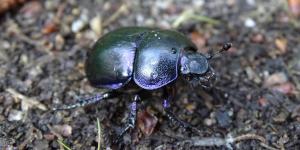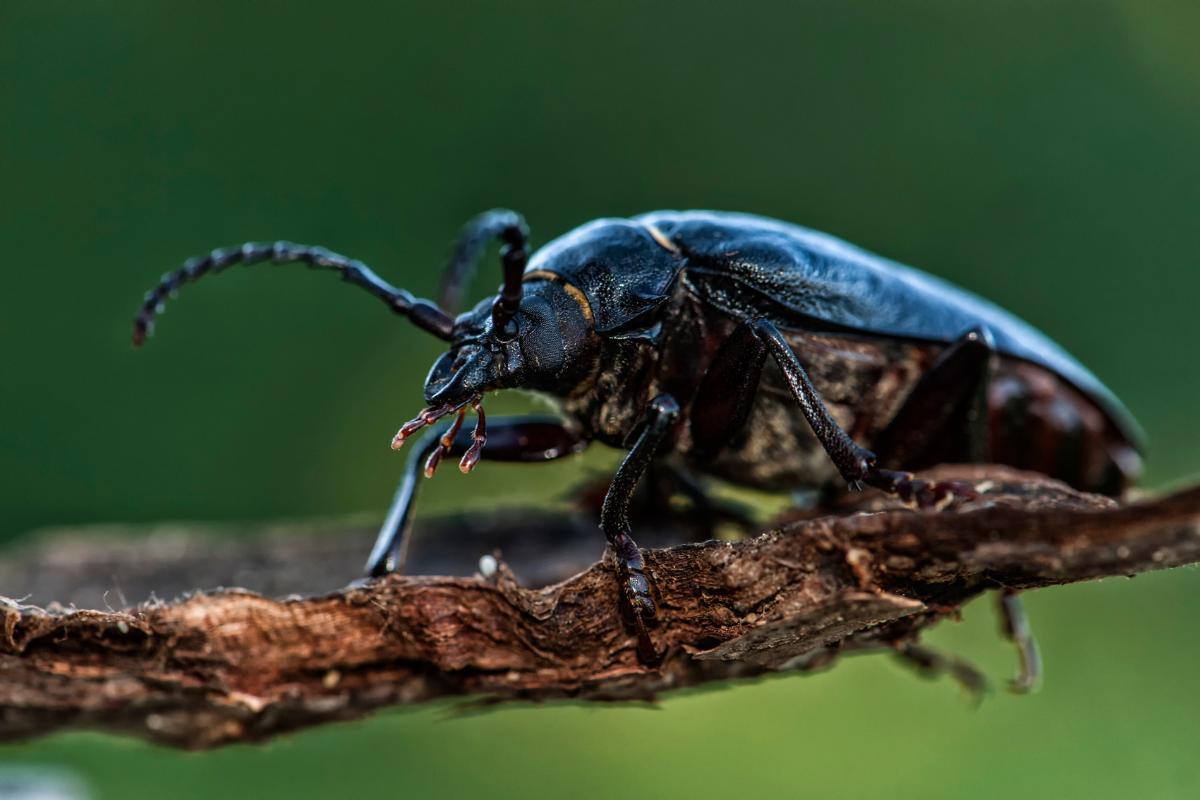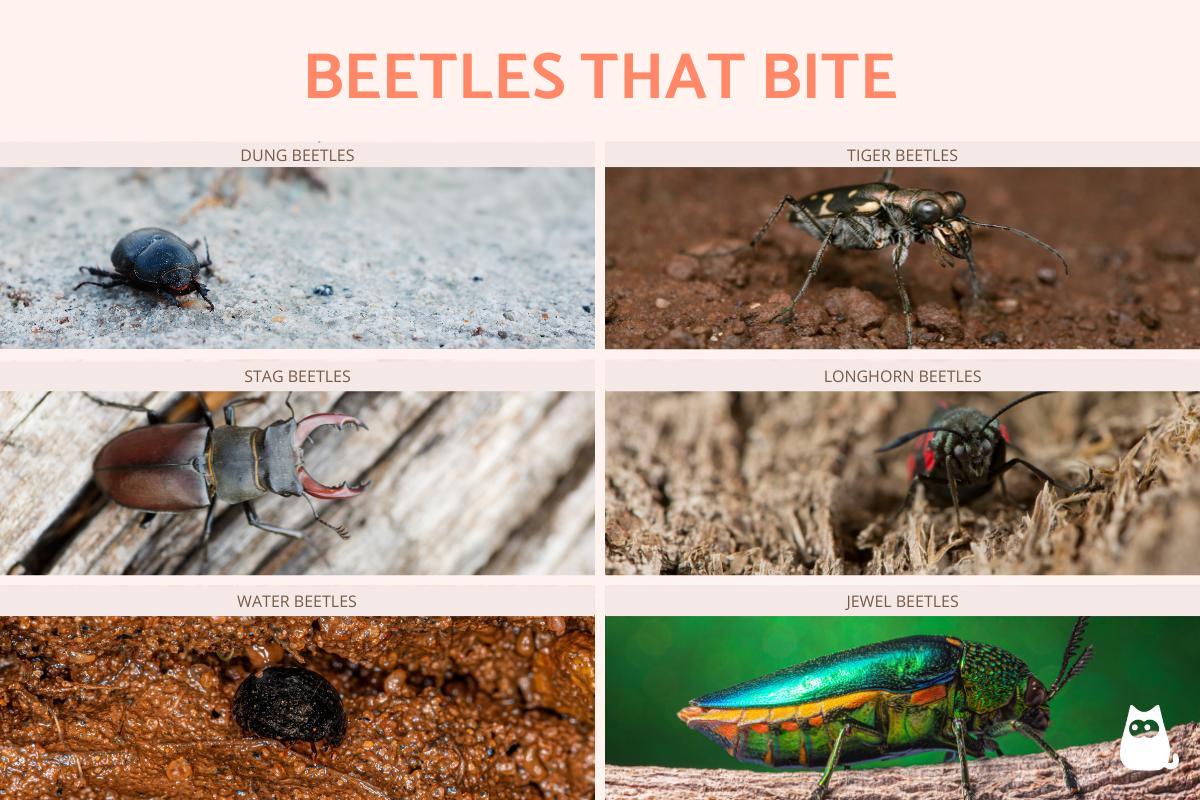Do Beetles Bite? - Types of Biting Beetles


Whether a beetle can bite a human depends on the type of beetle. Since the order of beetles (Coleoptera) makes up around 40% of all insect species, this can seem difficult to determine. There are some generalizations we can make. Beetles have mouth parts which include mandibles used to break down various material. Sometimes these are serrated if they are herbivorous, but those that are not serrated can still be sharp. Some beetles have adaptations such as horns or large pincers, but this does not necessarily mean they will bite or sting.
At AnimalWised, we ask do beetles bite? We look at different biting beetles with photos and how concerned we should be about being bitten by a beetle.
Do beetles bite or sting?
Most beetles do not sting or bite in a way that would cause significant harm to humans. Although some beetles have strong jaws, they will not likely cause much damage to our skin. They will most likely feel like a small nipe rather than a strong bite. In this way, most beetles can bite, but very few can cause us significant harm in doing so.
An example of a beetle that is sometimes known to nip is the stag beetle (Lucanidae). Male stag beetles are known for their large mandibles that resemble antlers. They can nip if handled. However, these jaws are mainly used in confrontations with other males during the mating season and will not likely be used against us.
If we are to be harmed by a beetle, it is more likely to be due to substances which some species can release. If we handle certain beetle species, they can release substances such as cantharidin which can be irritating to our skin. Some can even release harmful acids that they spray. Others might have a sensitivity to various compounds and experience an allergic reaction.
Some may wonder if beetles are able to sting. The vast majority of beetles are not able to sting and no beetle has a true stinger like a wasp or similar stinging insect. However, there are some with defensive behaviors which can act like a stinger. Also known as the scorpion beetle, Onychocerus albitarsis has sharp ends to their antennae which act as stingers and can inject venom with them. It is the only beetle species known to do so.
As with any insect, it is possible that some people may experience skin reactions, especially if they are allergic to the chemicals that some beetles may release as a defensive measure. We must always remember not to disturb the fauna of the wild. If we want to observe beetles, we must do so without interfering with their habitat and thus avoid possible harm to them or ourselves.
Discover more about the physical adaptations of beetles with our article on beetle anatomy and body parts.
What happens if your are bitten by a beetle?
As stated above, most beetles are not equipped to inflict painful bites or stings on humans. If we are bitten by a beetle, it is most likely we will feel a little pinch at most or even nothing at all.
There are a few exceptions. Some beetles, such as the bombardier beetle (family Carabidae), have strong jaws that they can pinch if they feel threatened. Although this type of sting is not poisonous or dangerous to humans, it can cause discomfort or irritation to the skin.
We should also keep in mind that instead of a physical sting, some beetles release defensive chemicals when they feel threatened. For example, the bombardier beetle can release hot vapor and irritating chemicals as a self-defense measure.
Although beetle bites do not typically cause serious allergic reactions in humans, some people may be sensitive to chemicals released by certain beetles. In these cases, skin irritation could be more pronounced.
It is essential to remember that, generally speaking, interaction with beetles does not represent a significant risk to human health. While some species may have defensive mechanisms, these beetle defenses are not commonly a medical concern. If you do experience severe symptoms or allergic reactions after a beetle bite, it is advisable to seek medical attention.
Discover more about how beetles are adapted to their environment with our article on how many legs do beetles have?
What kind of beetles bite?
As we said, beetles are not equipped to inflict painful stings or bites on humans. Their anatomy and behavior are not oriented towards offensive action against human beings. There are some exceptions and particular situations worth considering.
Bombardier beetles from the family Carabidae do not sting in the traditional sense, but they have powerful jaws and are capable of pinching when it feels threatened. Additionally, they can release irritating chemicals as a defensive mechanism. No beetle has a venom which is considered harmful to humans, certainly not in the lethal sense.
The types of biting beetles do not pose a significant threat to people, but we should be careful when holding the following (you can see photos of each species below):
- Dung beetles (family Scarabaeidae): dome species of dung beetle may nip if disturbed, most often when confusing people with potential predators. These bites are usually harmless and do not cause significant damage.
- Tiger beetles (family Cicindelidae): although not known to sting, the larvae of some tiger beetles can have strong jaws and pinch if disturbed.
- Stag beetles (family Lucanidae): male stag beetles are known for the size of their mandibles which can appear intimidating, as seen in the photo. These jaws are used in combat between males during the mating season, but on rare occasions, they may pinch if handled.
- Longhorn beetles (family Cerambycidae): in addition to the long anteenae seen in the photo below, some species of longhorned beetles have long, strong jaws that may pinch if disturbed. These beetles are often found in decaying wood.
- Water or diving beetles (families Dytiscidae and Hydrophilidae): although most aquatic beetles do not sting, some species can bite if handled. These beetles are adapted to aquatic life and are agile predators. Learn more about aquatic insects with our related guide.
- Jewel beetles (family Buprestidae): some species of jewel beetles have strong jaws and can pinch if handled. These beetles are often found on wood and can be attractive for their bright patterns and colors, hence their common name.
Generally speaking, beetles do not bite people. When beetle bites do occur, they tend not to be serious. Most beetles do not actively seek to sting humans. Any negative interaction is usually accidental or defensive. Still, it's important to use caution when handling unfamiliar beetles, as some people may be allergic to chemicals that certain species release as a defense mechanism.

If you want to read similar articles to Do Beetles Bite? - Types of Biting Beetles, we recommend you visit our Facts about the animal kingdom category.
- Acorn, J.H., & Ball, G.E. (1991). The mandibles of some adult ground beetles: structure, function, and the evolution of herbivory (Coleoptera: Carabidae). Canadian Journal of Zoology, 69(3), 638-650.
- Hata, K., & Edmonds, W. D. (1983). Structure and function of the mandibles of adult dung beetles (Coleoptera: Scarabaeidae). International Journal of Insect Morphology and Embryology, 12(1), 1-12.
- Krinsky, W.L. (2019). Beetles (Coleoptera). In Medical and Veterinary Entomology (pp. 129-143). Academic Press.
- Mills, M.R., Nemri, R.S., Carlson, E.A., Wilde, W., Gotoh, H., Lavine, L.C., & Swanson, B.O. (2016). Functional mechanics of beetle mandibles: honest signaling in a sexually selected system. Journal of Experimental Zoology Part A: Ecological Genetics and Physiology, 325(1), 3-12.
- Amaral, A. L. S., Castilho, A., Borges De Sá Sforcin, A. L., & Haddad Junior, V. (2018). Envenomations in humans caused by the venomous beetle Onychocerus albitarsis: Observation of two cases in São Paulo State, Brazil. Journal of Clinical Toxicology, 8(4), 392.






 Found this massive beetle near door Never seen one this big before
Found this massive beetle near door Never seen one this big before

